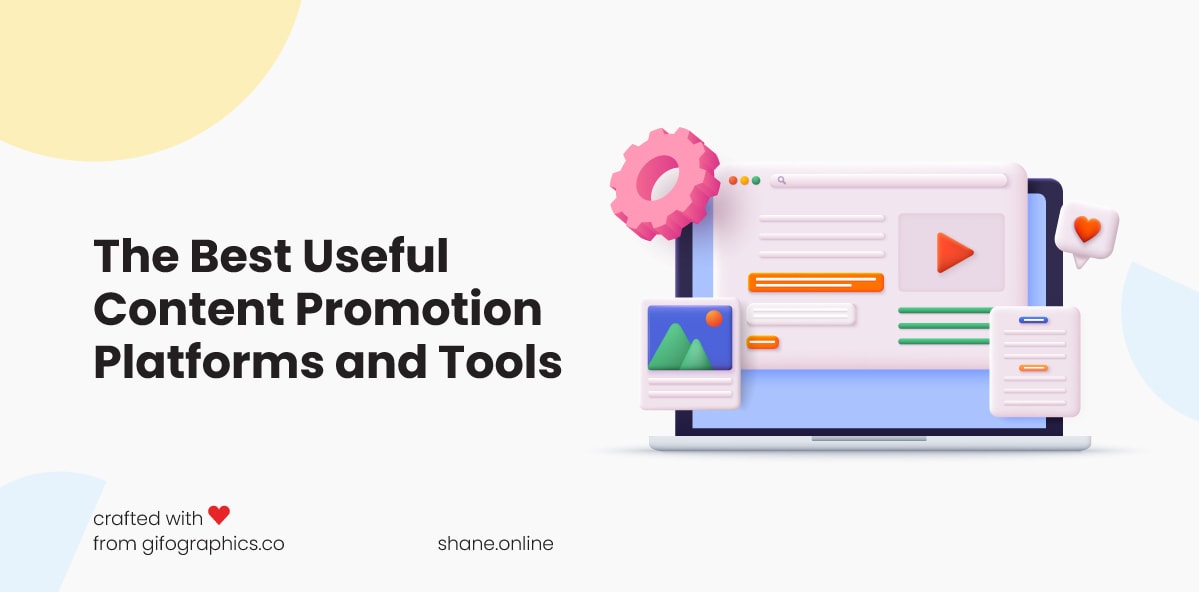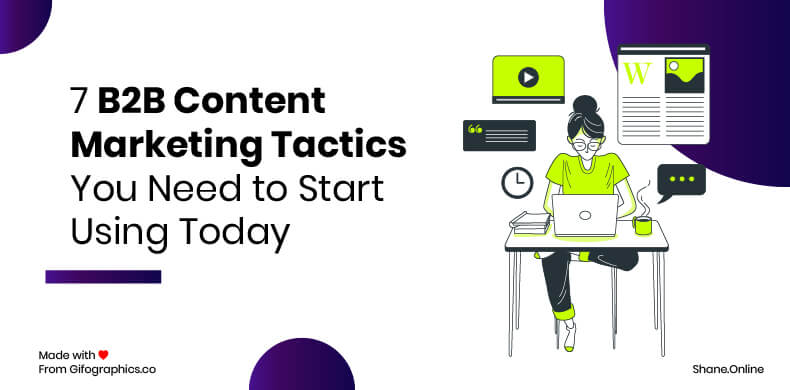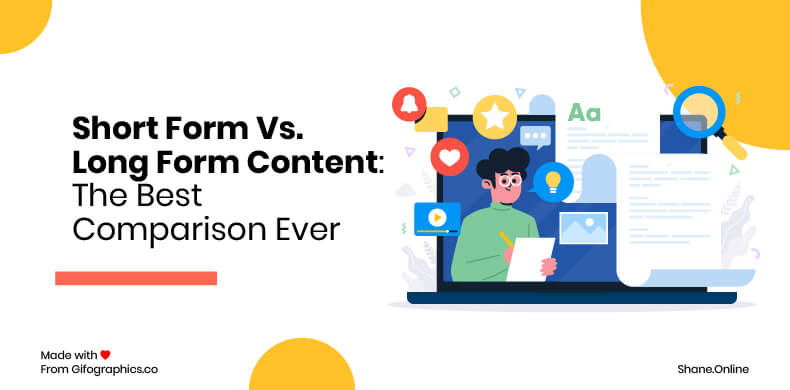Visual marketing strategies and content have garnered a lot of attention over the last decade.
Internet users, with an emphasis on Millennials and Gen-Z, spend most of their time consuming visual content, especially videos, on their mobile devices.
80% of marketers prefer using visual images as part of their marketing strategies, while 63% use videos in brand marketing.
![top 10 visual marketing strategies you need to know in [year] 1 social media marketing campaigns stats visual marketing facts](https://shanebarker.com/wp-content/uploads/2022/10/social-media-marketing-campaigns-stats-Visual-Marketing-Facts.webp)
In this post, I’ll go over the best visual marketing strategies that will help you design effective brand marketing campaigns for your online stores.
But first, let us understand what visual marketing is.
What is Visual Marketing?
Visual marketing involves the use of videos, images, graphics, logos, and other multimedia content. Visuals let you engagingly convey your information.
Visual marketing strategies can be a great way to get the attention of your audience, even when they are only skimming through your article.
It’s usually used within a larger marketing strategy, helping the brand depict ideas and content better than what speech or text could do.
In the previously cited study, 68% of marketers said that they wanted to increase their use of visual images in their marketing strategies.
Additionally, 77% and 63% of marketers said they wanted to use more videos and live videos in their brand marketing, respectively.
![top 10 visual marketing strategies you need to know in [year] 2 visual images, videos and live videos stats visual marketing facts](https://shanebarker.com/wp-content/uploads/2020/01/visual-images-videos-and-live-videos-stats-Visual-Marketing-Facts.png)
What Are the Most Common Visual Marketing Content Types?
Next, let’s take a look at the most common types of visual marketing content.
Images
As long as most current internet users can remember, images have been a part of the browsing experience.
An image is a representation of an external form, person, or scene.
In visual marketing, images can be used to:
- Show what a product looks like or how it functions.
- Show the quality of products.
- Show products in use by other consumers.
- Show images of the company and the brand logo.
What’s most difficult today in using images as visual marketing content is finding new ways to use images to market content in a market that has been staring at stock image advertisement photos for the last 20 years.
Videos
Video marketing was usually done on television through advertisements and product placements in movies and shows.
Recently, Facebook published some shocking findings.
Using in-home eye tracking, they found that 94% of participants kept their phones in their hands while watching TV. They also found that participants only spent 53% of their time staring at the TV. The rest of the time was spent staring at their phone screen.
The most important thing for marketers though is the fact that the time they typically spent staring at their mobile phones was during ads.
This might interfere with the effectiveness of traditional TV ads. Not just that, but a lot of Gen-Z and Millennials have moved away completely from traditional TV to streaming video, where some formats are completely ad-free.
Thus, the way visual marketing concerning video is handled has changed a lot in 2022. Videos now include short 15-second clips, vlogs, and memes.
Infographics
Infographics are a combination of images and text.
Infographics are used to portray information in an interesting and visually-striking way. The idea behind it is that users can comprehend a lot of data easier in a visualization, than just writing it all out.
Infographics come in all shapes and sizes with no rules or limitations. The best advice is to keep infographics simple, easy to read and comprehend, with colors that pop and draw attention to the most important info.
Memes
A meme is a viral image, video, or even phrase that references pop-culture and daily life in a funny way.
Memes have taken on their own sub-set of marketing, considering the cultural impact memes have had in the last decade or so.
Memes have been around for decades, with The New York Times Crossword using the word meme in its crosswords since the 1940s.
Memes can be used by brands and companies to take advantage of a trend to spark a conversation or share an idea. It can also just be funny, which should get people sharing it with all their friends on social media.
Memes can be tricky to master, as trends come and go in the blink of an eye. If you stay on top of the latest social media trends, though, you should be able to take advantage of memes to market your brand.
Presentations
Most web browsers can display interactive tools and slides on a website.
These slides can easily be used to add presentations to your website. Presentations are a great way of offering more info in an interactive and easily digestible way.
Presentations can be used to show different products, different functions of a product, and even educational information on how to use a product.
Why is Visual Marketing a Must-Use? Visual Marketing Facts
In 2020 84% of all marketing content included some form of visual marketing. It’s considered that by the end of 2022, over 82% of traffic on the web will come from video content.
These statistics offer some insights into how important it is to have visual content on your website. Even then, you’re better off creating video content considering it is the most consumed content form.
The human brain is also capable of processing images much faster than text. We can process an image in 13 milliseconds, whereas 100 words, about as large as these last two paragraphs, takes at least 4.4 seconds.
That means it’s easier to convey an idea using an image rather than text or even speech. This is especially true when you only have a second or two to get the attention of the user.
Advantages of Visual Marketing
The most significant advantage of visual marketing is that it allows your ad to stand out. It offers a visual representation of what your brand stands for.
It’s also able to grab the attention of the user, and offer some insights in a second or two before the user scrolls on. This is something text or speech isn’t able to do.
Visual marketing can also be used to boost incoming traffic to your website. You can use sneak peeks, DIY videos, or video ads on social media to drive traffic to your website.
You should also use visual marketing to create a brand identity. Creating a unique style will allow you to visual content that will immediately let users know it’s your brand. This consistency will increase brand loyalty and recognition.
10 Best Visual Marketing Strategies For You
1. People Prefer Visuals to Text
Reading long articles that are more than a thousand words doesn’t catch the fancy of all consumers.
Not everyone has the attention span for it. In fact, only 20% of readers finish reading an article. The average reader reads only 25% of an article.
Furthermore, 73% of respondents said in a survey that they have less time to give to reading and research.
However, they revealed that they were willing to spare over five minutes for interactive and visual content.
![top 10 visual marketing strategies you need to know in [year] 3 people prefer visuals to text visual marketing facts](https://shanebarker.com/wp-content/uploads/2022/10/People-Prefer-Visuals-to-Text-Visual-Marketing-Facts.webp)
By having a visual content marketing strategy, you can capture the reader’s attention.
They can help you break down complex subjects into easy-to-understand forms.
This, in turn, can help you increase the time people spend on your website.
According to a survey by Infographic World, 61% of consumers voted infographics as the most effective form of content for learning and retaining information.
They help them think deeply about a subject, consider making purchases, discuss topics with their friends and family, and change opinions.
![top 10 visual marketing strategies you need to know in [year] 4 survey by infographic world visual marketing facts](https://shanebarker.com/wp-content/uploads/2022/10/survey-by-Infographic-World-Visual-Marketing-Facts.webp)
When it comes to branded content, visuals win over text. Wyzowl found that 72% of consumers would rather watch a video than read text to find out more about a product or service. Especially on mobile phones.
HubSpot also found that 54% of consumers said they would like to see videos from companies or brands they support.
A majority of the respondents also said that they preferred videos that were entertaining, funny, and informative.
![top 10 visual marketing strategies you need to know in [year] 5 hubspot stats visual marketing facts](https://shanebarker.com/wp-content/uploads/2022/10/HubSpot-stats-Visual-Marketing-Facts.webp)
When it comes to attention span in real life, the length of your videos is also an important factor.
According to Vidyard, only 25% of the audience will finish watching a video that is longer than 20 minutes.
If you want to hold the attention of your audience with videos, keep them short.
Key Takeaways
Visuals can get the attention of your audience and help solidify your brand identity.
Instead of writing a lengthy article on how to use your product, opt for visuals. You could make a fun infographic with instructions on the process.
Alternatively, you could also create a video explaining the process. Just make sure that your videos aren’t too long.
2. Visual Marketing Increases Conversions
Facebook for Business found that 30% of US mobile shoppers consider video as the best medium to discover new products.
In addition to this, 48% of Australians said that they had purchased a product after watching a branded video.
![top 10 visual marketing strategies you need to know in [year] 6 visual marketing increases conversions visual marketing facts](https://shanebarker.com/wp-content/uploads/2022/10/Visual-Marketing-Increases-Conversions-Visual-Marketing-Facts.webp)
That’s all from Facebook. Google’s findings also reiterate this trend.
Google also found that shoppers, overwhelmed by choices, turn to online videos for guidance on what to buy. They also found that:
- People spend double the time watching YouTube videos on the topic “Which product to buy” year-over-year.
- The total watch time for videos on YouTube related to the topic, “When to buy” has increased by 100%.
- 90% of shoppers have discovered new branded content and products on YouTube.
- 60% of shoppers use online videos for inspiration and ideas for making purchases.
- 50% of shoppers revealed that online videos have helped them decide on which product or brand to purchase from.
- 50% of shoppers are likely to visit an online store or consider buying a specific product if it is mentioned in a video online.
- 50% of shoppers stated that they used online videos while shopping in a store.
![top 10 visual marketing strategies you need to know in [year] 7 think with google visual marketing facts](https://shanebarker.com/wp-content/uploads/2022/10/Think-with-Google-Visual-Marketing-Facts.webp)
Marley Spoon, a meal kit subscription service, tested this concept while trying to scale its marketing strategy. They wanted to raise awareness and grow their customer base.
They used a YouTube-only campaign, where they tailored every product explanation video to different audiences.
There was an ad showing how easy it is to use their service. Another one showed a family describing their experience in a humorous and emotive tone.
They used different videos but with the same objective.
They included calls to action at the end of each ad, encouraging viewers to “Sign Up” or “Try Now.”Their brand awareness increased by 25%, while their branded search volumes increased 9.5 times. Subscriptions to their meal kit increased by 52% while ad recall grew by 49%.
Key Takeaways
Use great visuals to create brand awareness and a clear path to purchase. Identify user needs and employ content creation to address these needs.
The visuals will capture consumer attention, engage, and inspire them.
Include a call-to-action to encourage them to act.
A holistic visual marketing strategy can deliver both long-term and short-term goals.
3. Visual Marketing Messages Get More Engagement
Adding value to visuals makes it easy for people to comprehend and engage with them.
Animoto found that video is the favorite content format of consumers on social media.
Additionally, 47% of them enjoy watching ads on Instagram Stories.
![top 10 visual marketing strategies you need to know in [year] 8 visual marketing messages get more engagement](https://shanebarker.com/wp-content/uploads/2022/10/Visual-Marketing-Messages-Get-More-Engagement.webp)
Brightcove found that videos drive consumer engagement. 53% of adult consumers engage with brands after viewing a video on social media.
Additionally, 66% of millennials engage with brands after watching videos on social media.
![top 10 visual marketing strategies you need to know in [year] 9 brightcove stats visual marketing facts](https://shanebarker.com/wp-content/uploads/2020/01/Brightcove-stats-Visual-Marketing-Facts.jpg)
Consumers also like to share visuals more than text with friends and family. 48% of them are likely to share video content with friends. On the contrary, only 23% of them said they’d share social media posts.
Key Takeaways
When choosing a visual to share on your social media platforms, ask yourself:
- How will my audience react to the visuals?
- Do the visuals add value?
- Are they easy to understand?
- Does the image or video improve my message or explain it further?
- Is there a better visual I could use?
If in doubt, go back and choose a more relevant image or video.
When adding visuals, remember that they are not decorations. They are there to add value to your content and can make or break it.
Don’t just add visuals to your marketing strategy because you need to. Choose visuals that are worth sharing. For example, ones with a color palette that matches your product.
Leverage content marketing software solutions to find images that are relevant to the content and your audience.
You want your audience to engage with your visual marketing messages, but they won't if the content does not inspire them.
4. Visual Marketing Increases ROI
The ROI of visual marketing will be the revenue you make compared to the money and time spent in creating or sourcing the visuals.
This ROI does not only include sales made but also includes other metrics depending on your goals.
According to the same study by Animoto, 93% of businesses get new customers through videos on social media.
Additionally, 63% of them got their best ROI from video, while 56% got it from photos and graphics.
![top 10 visual marketing strategies you need to know in [year] 10 animoto social media roi stats visual marketing facts](https://shanebarker.com/wp-content/uploads/2022/10/Animoto-social-media-roi-stats-Visual-Marketing-Facts.webp)
88% of marketers surveyed were also satisfied with the ROI of their video content. Additionally, 80% of them felt good about the ROI from video ads on social media.
The research also found that 64% of consumers made a purchase after viewing a video on Facebook. On the other hand, 48% of them purchased after watching videos on Instagram.
![top 10 visual marketing strategies you need to know in [year] 11 video drives purchase stats visual marketing facts](https://shanebarker.com/wp-content/uploads/2022/10/video-drives-purchase-stats-Visual-Marketing-Facts.webp)
Key Takeaways
Visual marketing can help improve your ROI because it helps your brand grab the consumer’s attention and connect better with them.
Measuring the performance of your visuals empowers your strategy with insights into how your company can deliver value. Based on these insights, you can improve your offerings.
To measure what’s working and what’s not, you can use analytics tools. You should record the reach to know how far the message has spread ever since you started your visual marketing campaign.
How many unique visitors saw the visuals? What is the engagement rate? You must have answers to these questions. This data allows you to understand how the audience is engaging with your visual content.
5. Visual Marketing Drives Ecommerce Sales
Splashlight commissioned a survey which found that:
- 47% of American consumers rate high-quality images as the most important factor when purchasing from a specific brand online.
- Nearly 50% of US consumers want to see 3 to 5 product images, showing the back, front, and side of the product, before making a purchase
- 7% of online consumers find that model photos increase their likelihood of buying a product.
Key Takeaways
Consumers want high-quality product images that show them the different sides of a product. Product descriptions tell what the product can do, but visuals influence the consumer more.
They show what the product looks like, and if you use high-quality images, you increase your chances of conversions.
Combine these high-quality images with the power of influencer marketing in your marketing plan, and you can grow your sales drastically.
The influencer provides social proof and trust, which can increase your conversion rate.
6. User-Generated Content Drives Visual Marketing
Bazaarvoice found that although photos and videos from brands drive awareness and brand recognition, they suffer consumer skepticism.
45% of online shoppers think that stock or studio images by brands exaggerated product claims.
However, user-generated content in the form of videos or images is more likely to influence shoppers to purchase or try new products.
These kinds of user-generated content are also the deciding factor when consumers are choosing between brands.
56% of shoppers say that other shoppers’ images and videos give them a better depiction of the brand experience.
![top 10 visual marketing strategies you need to know in [year] 12 bazaarvoice stats visual marketing facts](https://shanebarker.com/wp-content/uploads/2022/10/Bazaarvoice-stats-Visual-Marketing-Facts.webp)
According to Stackla, user-generated content is 9.8x more impactful than content creation from influencers. They also found that:
- UGC images were 1.8x more likely to make people interested in traveling than influencer content.
- 57% of consumers had made plans to dine at a restaurant based on videos or social images from family, friends, or peers.
- 45% of consumers found that customer-created visuals influenced their decision when purchasing a car.
- 54% of consumers bought consumer packaged goods based on videos or images from peers, friends, or family on social media.
Key Takeaways
User-generated visuals have an unmatched influence on target audiences. Consumers look for these visuals when making purchasing decisions.
Your brand identity cannot only rely on stock, staged, and influencer visuals to reach consumers. UGC can increase your authenticity, improve your brand image, and help you establish meaningful connections with your target audience.
Request that your customers share their experiences with your brand on social media and other review sites.
Nearly 49% of consumers are willing to share positive reviews on social networking sites or online.
Additionally, 54% of millennial women also share positive reviews to get others to shop from a brand that offered positive experiences.
7. Visual Marketing Enables Visual Search
Visual search is one that uses real images or screenshots. For example, when you search for a style match on Pinterest or point a Google Lens camera at an object, you use visual search.
It answers questions that are a bit hard to verbalize. In 2017, the number of Google Image searches constituted nearly 27% of all searches.
![top 10 visual marketing strategies you need to know in [year] 13 moz stats on google image searches visual marketing facts](https://shanebarker.com/wp-content/uploads/2022/10/Moz-stats-on-Google-Image-searches-Visual-Marketing-Facts.webp)
eMarketer also found that millennial internet users were most comfortable adopting visual search while shopping online.
![top 10 visual marketing strategies you need to know in [year] 14 emarketer stats visual marketing facts](https://shanebarker.com/wp-content/uploads/2022/10/eMarketer-stats-Visual-Marketing-Facts.webp)
Visual platforms like Pinterest saw nearly 600 million visual searches every month in 2018 through Pinterest Lens.
People are embracing visual search to find products or images when they have a hard time verbalizing the search.
Key Takeaways
Visual search will accelerate in the coming years, and your brand needs to be a part of this trend.
The accuracy of the searches has increased with the advent of image recognition tools and search engines that recognize visual searches.
Marketers should optimize images for visual search by building an image library. Implement a strong SEO strategy that includes images.
As part of your visual content marketing strategy, you should also have a strong brand presence on Pinterest and include metadata in your visual content’s information as part of your marketing plan.
8. Create Content with Mobile Use in Mind
People spend more time a day on their mobile phones than any other source of media like TVs or radios. Users spend over 3 and a half hours on average using their mobile phones a day.
Thus, taking advantage of this very important piece of people’s lives is important.
When creating content, think about how it will look on a mobile phone. Even better, create content for mobile devices exclusively.
This could be a TikTok video, Facebook ad, or Instagram Story. Any one of these will end up on a user’s mobile device screen.
Here’s an example video ad posted by Stella McCartney on her TikTok channel promoting new Adidas shoes.
Key Takeaways
Most people use their mobile devices daily to consume media. Moreso than television, which is why it’s important to use social media apps to get your visual content seen by people.
9. Create a Brand Identity and Image
Visuals aren’t just all about creating engaging ads, it’s about your brand’s image and what people identify with it.
A good name is a great start, but without a well-designed logo and aesthetic, the name won’t mean much.
Just think about the red Coca-Cola cans and their stylized text, or car brands and their logos.
![top 10 visual marketing strategies you need to know in [year] 15 create a brdand identity and image](https://shanebarker.com/wp-content/uploads/2022/10/create-a-brdand-identity-and-image.webp)
It’s important to create an aesthetic and logo, but it’s also important to stick to it. Having consistency in your brand identity and style will help build trust between your brand and your audience, as well as increase brand recognition.
As we can see above, 6 consecutive posts on Coca-Cola’s Instagram all share similar aesthetics. These mostly have to do with a new line of Coca-Cola flavors coming out under the banner “Creations.”
Key Takeaways
Learning from larger companies like Coca-Cola is good, and as we can see they make sure to create an aesthetic, choosing colors carefully and sticking to a theme when launching a new product.
Each one of their posts during the campaign shared similar color tones, style, and themes. This allows users to quickly identify the brand related to the post, as well as the product being advertised.
10. Create Visual Content for Your Target Audience
Content created for your target audience always performs better than content made without any audience in mind.
The best way to find your target audience is to focus on the engagement rates of previous visual marketing campaigns. This will allow you to pinpoint specific subjects, styles, and content types that most of your audience will engage with.
Although targeted ads have been frowned upon and declared as an unfit use of personal data, younger internet users aged between 18-24 years old seem to have a different opinion, with 41% of users preferring targeted ads.According to research done by Meta, younger users’ attention is 75% on a video ad than older users over 65. This is why it’s important to create content that will attract your target audience and keep them till the end of the video.
Key Takeaways
Creating visual marketing content that engages your target audience is significant to keep their attention, increase lead generation, and possibly increase your conversion rate as well.
It’s also important since you won’t be wasting money paying for ads that users won’t even care about. Distribution of ads on platforms like Facebook and Instagram can be set to filter countries, age, and gender.
You’ll only pay for each ad distributed, which means you send your ad worldwide and to all ages, you’ll be paying more for an ad that only relates to a fraction of the users that actually watch it.
What Are Some Good and Inspiring Examples of Visual Marketing?
There are plenty of excellent examples of good visual marketing online. Here are a few to inspire you.
1. Grammarly
One look at Grammarly’s Pinterest account, and you’ll quickly find yourself neck deep in memes and funny GIFs.
![top 10 visual marketing strategies you need to know in [year] 16 grammarly](https://shanebarker.com/wp-content/uploads/2022/10/grammarly.webp)
Grammarly is a grammar checking tool. It’s also able to suggest better phrasing and writing tips.
With the focus being on grammar, Grammarly uses their account to post memes and jokes about grammar. It perfectly fits their brand and shows that the brand isn’t scared to have a little fun.
2. Starbucks
![top 10 visual marketing strategies you need to know in [year] 17 starbucks](https://shanebarker.com/wp-content/uploads/2022/10/starbucks.webp)
Starbucks’ Instagram account is a great example to follow when creating and posting on your brand's Instagram account.
Their logo is clearly displayed, and their bio is simple and changes depending on seasons, holidays, and special occasions.
This screenshot comes just as fall is starting. As you can see below, all their new posts share similar fall themes and colors.
![top 10 visual marketing strategies you need to know in [year] 18 starbucks](https://shanebarker.com/wp-content/uploads/2022/10/starbucks-1.webp)
3. Wholefoods
Wholefoods’ Facebook page is full of excellent visual content.
They’ve created a very passionate and vocal community, which is great for word-of-mouth marketing. They also spend a lot of time creating engaging content for their followers.
Freshly Ground Honey-Roasted Peanut ButterFreshly ground honey-roasted peanuts. No more, no less.
Posted by Whole Foods Market on Monday, 19 September
In this video posted on their Facebook page, they show you how easy it is to get honey roasted peanuts and grind them.
Posts like this quickly get shared and show possible customers cool things about the retail chain that make it special and set it apart from other stores.
4. Coca-Cola
Now for something a bit more grandiose. Most companies can’t afford a large marketing team, but the fact remains that the large marketing team behind Coca-Cola keeps creating stunning advertisements and visual content yearly.
What they achieve through marketing is most likely out of reach for most businesses, especially smaller businesses, but it doesn’t hurt to dream big.
Last year, they collaborated with Tyler, The Creator, to create an awesome song that went viral.
FAQs
Q1. What is the best way to create visual marketing content online?
You can create a variety of visual marketing content online including images, charts, infographics, and videos.
There are many tools and apps, beyond just graphic designers, that can help you create engaging visual content for your visual marketing strategy.
Q2. How do you promote a company's brand with a visual content marketing strategy?
You can promote a company’s brand image with a visual marketing strategy by using videos, images, graphics, logos, and other multimedia content.
Q3. What are some of the best visual marketing tools?
There are plenty of excellent visual marketing tools on the market. Some of the tools I recommend are Canva, Lumen5, and Bannersnack.
Are You Ready to Use a Visual Marketing Strategy to Promote Your Brand?
These facts about any visual content marketing strategy prove that you need visual marketing as part of your overall marketing strategy. Especially if you are a small business.
However, prioritize quality over quantity to ensure that you create and publish engaging visuals on all social media platforms. These social media posts can help you get more customer engagement and conversions.
It’s time to begin investing in a visual marketing strategy if you haven’t already. The visual content will not only keep your brand relevant but also ensure that you stay ahead of trends and competitors.
What visual marketing strategy did we miss? Tell us in the comment section below.


![21 awesome ecommerce content marketing examples for [year] 20 21 awesome ecommerce content marketing examples](https://shanebarker.com/wp-content/uploads/2021/12/100_-21-Awesome-Ecommerce-Content-Marketing-Examples.jpg)





Great info over again. Thanks a lot:)
Hey James, I really appreciate it. Thanks!